Genetic and Antigenic Characterization of Avian Avulavirus Type 6 (AAvV-6) Circulating in Canadian Wild Birds (2005-2017)
(2021)
Journal Article
Hisanaga, T., Soos, C., Lewis, N., Lung, O., Suderman, M., & Berhane, Y. (2021). Genetic and Antigenic Characterization of Avian Avulavirus Type 6 (AAvV-6) Circulating in Canadian Wild Birds (2005-2017). Viruses, 13(4), https://doi.org/10.3390/v13040543
We describe for the first time the genetic and antigenic characterization of 18 avian avulavirus type-6 viruses (AAvV-6) that were isolated from wild waterfowl in the Americas over the span of 12 years. Only one of the AAvV-6 viruses isolated failed... Read More about Genetic and Antigenic Characterization of Avian Avulavirus Type 6 (AAvV-6) Circulating in Canadian Wild Birds (2005-2017).
